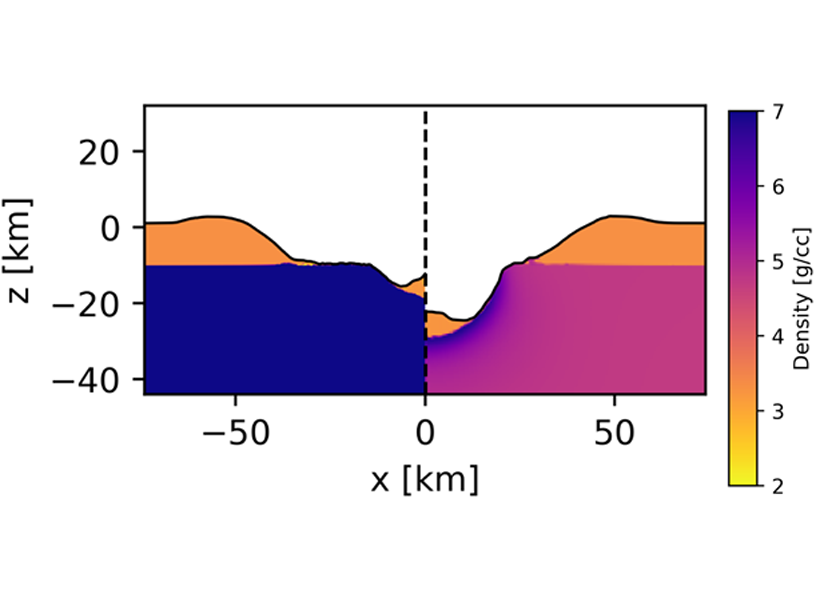Source: Journal of Geophysical Research: Planets
Asteroid (16) Psyche, the objective of NASA’s Psyche mission to be launched in summer 2022, is likely to be a world completely different from any we explored. It may be essentially a naked planetesimal core (although with perhaps a veneer of mantle materials, see Elkins-Tanton et al. [2020]). What landforms are we going to see when we get there? No equivalent world, with low gravity, yet possibly strong and dense constituent materials, has ever been explored.
In preparation for visiting this mysterious object, Raducan et al. [2020] simulate impact processes and predict the shape of impact craters for different assumptions about the near-surface structure of (16) Psyche and this shape can be used to constrain the interior structure of (16) Psyche. If the interior is homogeneous, the craters should be shaped like bowls and they should be exceptionally deep if the asteroid is indeed made of iron. More complex crater shapes, for example featuring a flattened bottom or prominent terraces, would indicate that the interior of the asteroid contains layers of iron and dunite.
These results help us build a vocabulary of crater morphologies that will be important to interpret the observations that the NASA probe will make when it arrives at the asteroid in 2026.
Citation: Raducan, S., Davison, T. M., & Collins, G. S. [2020]. Morphological diversity of impact craters on asteroid (16) Psyche: Insight from numerical models. Journal of Geophysical Research: Planets, 125, e2020JE006466. https://doi.org/10.1029/2020JE006466
―Laurent G. J. Montési, Editor-in-Chief, JGR: Planets
Text © 2020. The authors. CC BY-NC-ND 3.0
Except where otherwise noted, images are subject to copyright. Any reuse without express permission from the copyright owner is prohibited.

